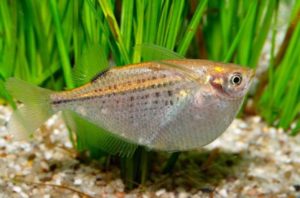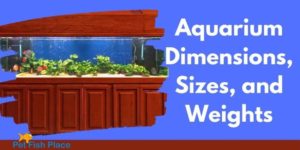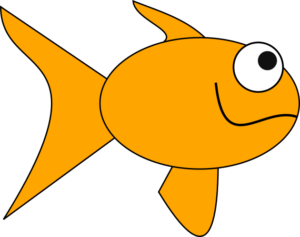Sharing is caring!
Unless you have a cold-water aquarium set-up, you are probably keeping tropical fish. Since tropical fish are native to tropical climates, they tend to prefer warmer waters. With that said, you’ll probably need to add a source of heat to your tank.
Types of heaters
There are three main styles of heaters available today. Luckily, they all work great at maintaining the temps of your aquarium so it’s really up to preference and/or your budget. A lot of it has to do with the location of the heater in your set-up. It can be within your tank, within the hoses that supply your sump or external filter, in your sump, or in some cases, your external filter can have a built-in heater. Here is an article to learn about the different types of filters. The types of heaters are:
- Standard heater
- In-line heater
- Thermofilter
Standard heater
This is what you’ll typically see available at your local pet store. They are also the most common style of heater used today. Standard heaters are great because they are affordable and simple to operate. All you have to do is set the temp and place it in your tank with the provided suction cups. Be sure to pay attention to the minimum water line. This type of filter can not be used outside of the water or above that fill line or it will be damaged. The only real downside with a standard heater is that it’s visible in your tank and depending on the look you’re going for, it can be considered an eye-sore.
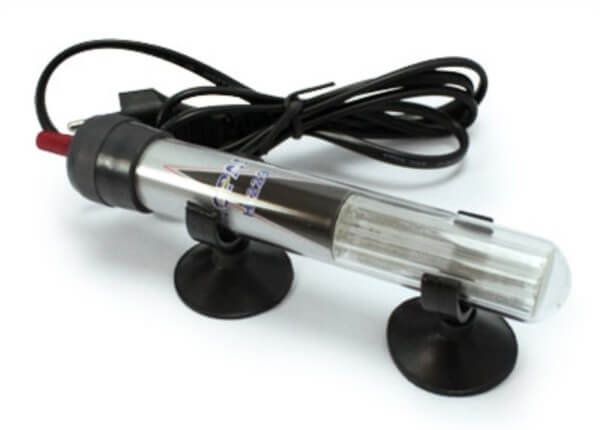
In-line heater
If you’re looking for that seamless look and want to avoid having any extra equipment inside of your tank, an in-line heater may be a good option. Be advised though that this type of heater will not work with hang on the back (HOB) filters. You must be running either a sump, a canister filter, or any other outside of the tank filter that pumps water back into your tank with a return line. It’s in this line that your in-line heater will be placed.
This ensures even heating of all your water and an even distribution as it’s flowing back into your tank. Many would argue that this is more efficient than a standard heater as well. Aside from those positives, it’s also hidden from sight. This style of heater does tend to be pricier than your standard heater though due to the extra equipment involved.
Built-in heater
Some filters on the market heat the water as it’s being filtered with a built-in heater. You’ll find these in some canister filters that are out there. The popular brand Eheim[link] has this available and more brands are starting to offer it as well. As far as heaters go, this will certainly be the most expensive option, but keep in mind that you’re also buying a filter too which will account for the high cost. If you’re looking to use an external filter anyways then you can always go this route and avoid having the extra purchase of a heater.
Wattage per gallon
A general rule of thumb is that you’ll need 3-5 watts per gallon of water. This varies depending on the ambient room temperature and the desired temperature of your aquarium. If you keep your home on the colder side and are keeping fish that require high temps, you’ll want to use the 5 watts per gallon rule. If the opposite is true then perhaps 3 watts per gallon is all you’ll need.
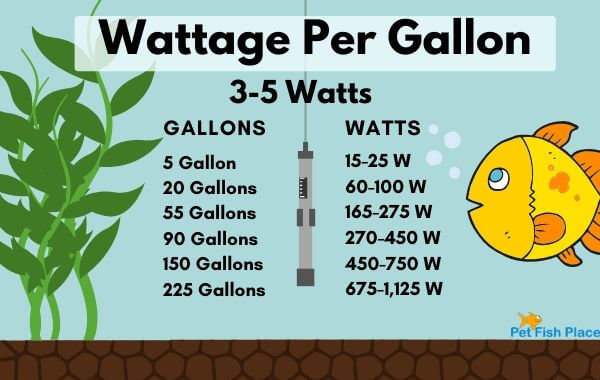
Using 2 heaters can be useful in any size aquarium but I’d say, in 75 gallons and up, you should definitely consider using 2 heaters. This method has several benefits. Firstly, in larger tanks, having multiple heaters will help evenly disperse the heat throughout your tank. Using 2 heaters will lighten the load on any single heater and may increase the life of your heaters. And last but not least, I’ve heard that this method is more energy-efficient. I, however, have not tested this theory myself.
Pro Tip: When using 2 heaters I recommend going a little over what you need. If you have a 100-gallon tank and need 500 watts of heating, try going with two 300 watt heaters.
Heating the room
Another great option for heating your tanks is by simply heating the room the tanks are in. Of course, if you have only 1 or 2 tanks it may not be practical to heat the whole house. This will make your family sweat and raise your heating bill significantly.
This is more for those with “fish rooms”. A fish room is a room or structure with the specific purpose of housing your aquariums. It’s far easier to keep a room at 76°F than to keep 15 aquariums at that temp. And when you are maintaining 4,000 gallons of water, heating the room will probably be more economical too.
What to do in a power outage
Unforeseen events are an unfortunate reality in life. Power outages do happen and you’ll want to make sure that you have a plan for your fishy friends. For some of you, you may have an alternate source of heat that you can use, such as a fireplace of a wood-burning stove. Temperature drops in your tank are inevitable but the goal is only to minimize the effects.
For those of us that can’t keep the house warm enough for our tanks in a power outage, there are steps that you can take. The first step is to keep as much as the heat that is already in your aquarium, in your aquarium. Wrap your tanks in blankets paying specific attention to the tops of your tanks. The top is where the water comes in contact with the colder air and will cool the water quicker than through the glass. The thicker the barrier between the water and the air, the better your results will be.
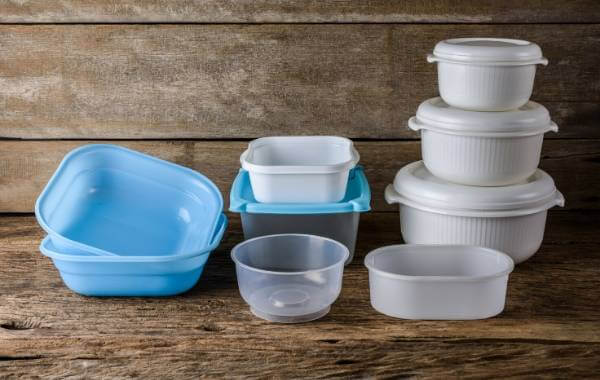
In extended power outages, you may have to start thinking about adding in an alternate source of heat. If you still have a way to heat up water, you’re in luck. This can be from the existing hot water in your hot water tank or heating up water on a gas stove. Do not directly add hot water to your tank though. This can cause pockets of hot water and can harm your fish. A better way is too put hot water in sealable containers and place them in the tank. Make sure you clean the container well before introducing it into your aquarium. Repeat as necessary until power is restored.
In the event of a broken heater
Aside from power outages the heaters themselves can and will fail eventually, nothing lasts forever. Buying a good quality heater and following all of the recommendations will ensure that your heater will have a long life. Even with proper care though, your heater can still let you down. This can be from over-use from being underpowered and therefore always on or your water level falling below the minimum waterline while the heater is still hot. Sometimes it’s simply a faulty heater that had a flaw in its construction. Either way, you’ll want to be prepared.
If your heater simply stops working, you have 2 options. If you have extra heaters laying around, I recommended this, simply replace the broken one for one that works. If, however, you don’t have extra heaters laying around you can turn the heat up in your home or refer to the above section, “What to do in a power outage”. Making your house a little warmer is usually good enough while you are waiting to get a new heater. A temperature drop of less than 10°F degrees may stress your fish out a bit but it’s not the end of the world.
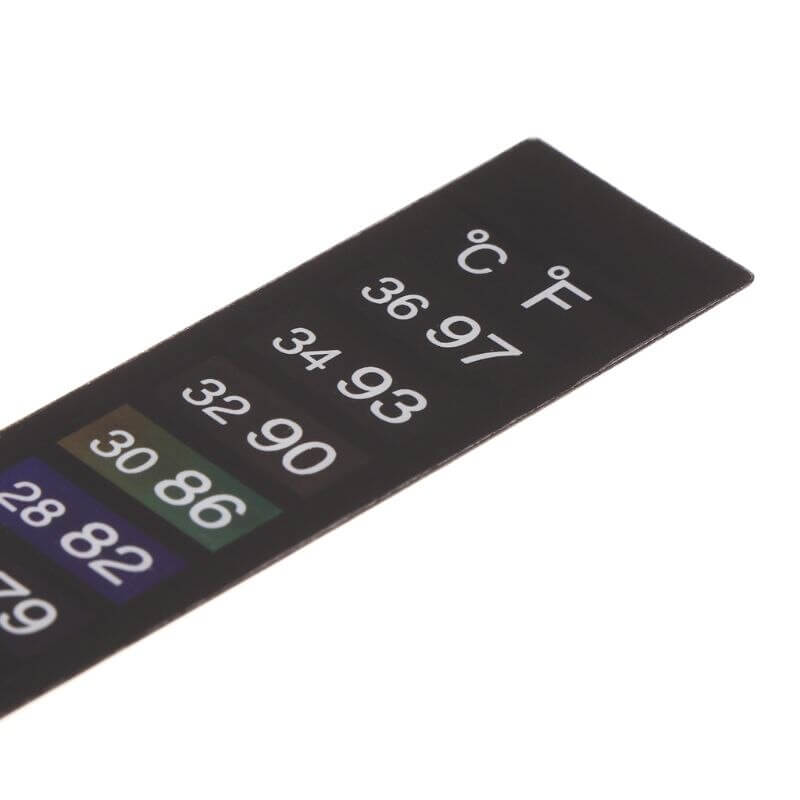
A far worse scenario than your heater not working is when your heater won’t shut off. This happens when the heater’s internal thermostat fails, leaving the heater in the ON position. If this goes unnoticed, the heat in your aquarium will continue to rise which will create an unlivable environment for your aquatic friends. This can be prevented by monitoring the temperatures with some type of thermometer. The stick-on types are far from great but are better than nothing. There are electronic types that are more accurate and some even have an alarm.
If your heater gets stuck in the ON position in a smaller tank it may heat up faster than you realize and a stick-on thermometer is unlikely to be noticed in time. The only tried and true way to prevent this from happening is by hooking your heater up to an external thermostat. This will monitor your tanks’ temperatures and will provide or cut off power to your heater at the appropriate temperatures set by you. This, of course, is an added cost to your set-up.
DISCLAIMER – As always, ensure that you have a drip loop in all of your electrical cords. This will prevent any possible water from dripping into an outlet creating an electrical hazard.
Sharing is caring!


